Is there an artistic team, apart from yourself, who will write the libretto and / or the adaption of Camus’ novel?
Yes. I work in collaboration with:
1) Annette Müller: dramaturge and theater director. She works in different theater productions in Germany.
2) Bart Brouns: He is an expert in the German language with knowledge of French literature. He is also a musician.
Working with Annette Müller:
The dramaturgy of this opera follows the chronological storyline as in the novel (ex: the funeral, the beach, the prison, the trial). I don’t want to produce a new text based on Camus’ novel but I will use a solid selection of the existent text, which will be the basic structure for my new work.
“On the surface, L’Étranger gives the appearance of being an extremely simple though carefully planned and written book. In reality, it is a dense and rich creation, full of undiscovered meanings and formal qualities.”
Carl Viggiani
It is my aim to follow the story in a linear way looking for richness, mainly in the emotional aspect, from a musical perspective. I want the audience to be able to follow the story linearly but not in a “word by word” way.
Subtitles are a good option, but not mandatory. Basic phrases can frame the scenes but subtitles won´t accompany the whole opera: I don’t want the audience to be reading all the time! Program notes could also be a good alternative, like in any traditional opera.
The text is minimal, but that doesn’t mean that it´s not important. Together with Annette Müller I want to create a substantial filter of the novel, selecting the phrases that, like pillars under a construction, hold the drama in a subtle but effective (and understandable) way.
Meursault, the main character, is carrying the narrative line from the beginning to the end (as in the novel). In my opera Meursault is a baritone, a voice range that, in my opinion, can clearly communicate text when necessary, both in sung and spoken text.
In addition, the ensemble (specially the woodwinds) will use spoken or sung texts together with their playing, using extended techniques. See the stage designs at the end of this document to have an idea of how the ensemble is used in the different scenes.
Working with Bart Brouns:
Bart Brouns, expert in German language with a deep knowledge of French literature,is also a musician. His collaboration in this project, is to select the original French texts from the novel that also can be understood by a German audience, creating a semantic link between the two languages. My question is: which words in the French novel can be understood by German speaking audiences?
I want to use the French language in my opera. The sound of the French language, beyond the meaning of the words, brings the opera into a “French existentialism mood”, that beyond the philosophy, creates a laconic atmosphere of senselessness and absurdity.
What could a possible production look like? How could a director use your musical material?
The text extracted from the novel and its original structure, is a clear guide for the drama. But the music score is the heart of this opera. I would make emphasis in the atmosphere again, that is the music + the scene
I have a lot of experience creating complete dramatic scenes by using sounds, objects, lights and movement, all of them organized in a music score. The opera follows the narrative line of Camus´ novel. But like in most operas, the text doesn’t need to be over-explained. The music and the dramaturgy will speak for themselves with the language of images and sounds. In my proposal, instruments and objects create complete audiovisual scenes, which, flow from one scene to the other, creating a sort of real time movie.
Some practical examples:
I made some sketches to show “how the stage of my opera could be” and the way I am linking the staging with my music and with the novel. These ideas are not meant to be taken literally. They are drafts to open an artistic dialogue between disciplines.
My proposal is based on a succession of scenes, solos, duos, trios and quartets which follow the storyline of the novel. In terms of musical texture, this opera is a “concerto for baritone and ensemble”, where the baritone (Meursault) is the leading voice. All scenes are organized around him. The rest of the singers (three) and the musicians (twelve), play the role of a choir that comments the scenes (remember that the musicians are also singing and playing through the instruments). The drama is built from Meursault´s perspective. The choir represents the “outside”, or better said, “all that is not Meursault thoughts”.
Occasionally some of the characters have more prominence in the drama (Marie, the judge, the typist in the trial). But this brief presence vanishes rapidly into the anonymity of the choir, as a metaphor of the outside being inapprehensible by Meursault.
1. Funeral scene: solo of Meursault with the coffin of his mother (he doesn´t look at her). A distant choir of the funeral participants comment on Meursault behavior.
Voulez-vous auparavant voir votre mère une dernière fois ? » J’ai ditnon/ Wollen Sie Ihre Mutter vorher noch ein letztes Mal sehen?» Ich verneinte
2. The beach. Singers and musicians play bowls with water OR sand, creating a “surround system” with simple means. The sound of the water OR sand + instruments, goes in crescendo, ending with the fatidic gun–shots. The stage possibilities for water are interesting. Glass containers full of water, with a proper light design, can create a very poetic scene. You can hear the sound of sand together with the musical instruments in my piece “The dearest dream” fragment 03.00 until 04.00 https://vimeo.com/296329584
“…tout s’arrêtait ici entre la mer, le sable et le soleil, le double silence de la flûte et de l’eau.” “…alleswurde unbeweglich zwischen Meer, Sand und Töne: das zwiefacheSchweigen von Flöte und Wasser”.
3. Meursault. Baritone solo. He is talking with himself in a mirror. The choir is more distant and softer than ever. He is busy with his own thoughts, untouched by the outside world.
Mais tout le monde sait que la vie ne vaut pas la peine d’être vécue. Aber jeder weiß, daß das Leben nicht lebenswert ist.
4. The jail. Singers and musicians play long metal bars against the floor. Sound and image come together.
C’est justement pour ça qu’on vous met enprison. On vous prive de la liberté. » Je n’avais jamais pensé à cela. Je l’ai approuvé : « C’est vrai, lui ai-je dit, où serait la punition ?«Das ist doch die Freiheit. Man nimmt euch die Freiheit.» Dieser Gedanke war mir noch gar nicht gekommen. Ich stimmte ihm zu: «Das ist richtig, sonst wäre es ja keine Strafe.
5. Meursault duo with Marie. The text says that Marie is one woman and also all the women that he met before. The choir formed by all the female players of the ensemble and the female singers are the musical echo of Marie (singer 2).
“Je ne pensais jamais à Marie particulièrement. Mais je pensais tellement à une femme, aux femmes, à toutes celles que j’avais connues” Ich dachte dabei nicht besonders an Maria. Aber ich dachte so sehr an eine Frau, an Frauen, an alle, die ich gekannt”
6. The trial is a polyphonic multilayered scene. A group of ventilators ison stage. The oscillating heads follow the trial as if they were the heads of the people in court. This scene is rich in meanings: the ventilators are related to the suffocating summer, but they also are a metaphor for members of society as robots. Ventilators can be switched on and off from a distance following musical cues. A whole kinetic choreography can be organized on stage synchronizing singers, instruments and objects creating a “Grand Finale”. See “Musica invisible for flute and ventilators”, fragment from 0.14 until 0.40 https://vimeo.com/48767850
Other elements from the novel present in this scene are: the bell of the judge in counterpoint to the bells from outside; there is also a vibraphone solo emulating the typist, who annotates the events of the trial. See “Esta tarde leo a Adorno”, fragment from the very beginning (vibraphone solo) https://vimeo.com/264749844
L’après-midi, les grands ventilateurs brassaient toujours l’air épaisde la salle et les petits éventails multicolores des jurés s’agitaienttous dans le même sens. Am Nachmittag wirbelten die großenVentilatoren die dicke Luft im Saal durcheinander, und die kleinen, bunten Fächer der Geschworenen bewegten sich alle im gleichenTakt.
Your concept recalls the musical and theatrical ideas of John Cage and combines abstract musical processes with humour and theatricality. Nevertheless, we would like to ask you for more and more precise information: You suggest that surtitles will be used in order to convey the story of Albert Camus’ »The Stranger«. How do situations and characters of that same novel inform the musical structure itself? To put it differently: Is there a way of understanding the main situations and moments of the story if you take away the surtitles?
Unlike Cage, philosopher of sounds, where the objects were a tool to break the academic establishment of his time, I am interested in the sounds coming from everyday objects but I consider them musical instruments. In my music chance operations are reduced. I expect precise results from the sound objects. The objects are written in the score in additional lines together with the lines of the ensemble, in a detailed “ala Lachenmann” style.
I like to write music for everyday life objects together with traditional musical instruments. Writing for a ventilator requires the same dedication (if not more!) than writing a solo for violin. I like to think that by bringing instruments and objects together audiences can not only see the beauty of the established traditional instruments, but also of everyday life objects.
Concerning the structure, and its level of determinacy, it is my aim that the story is understood independently from the subtitles. Subtitles can help audience, specially not familiar with modern music, but text is not the pillar of this opera.


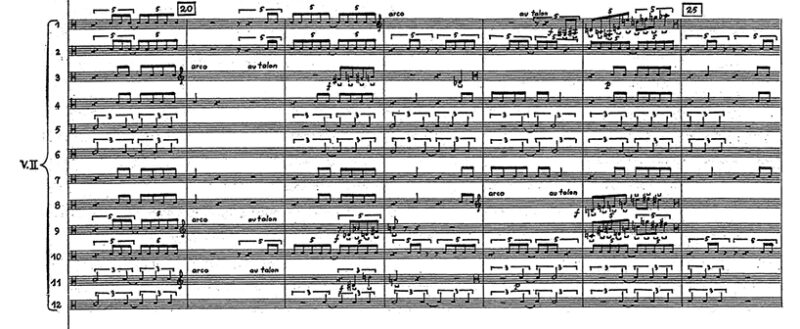





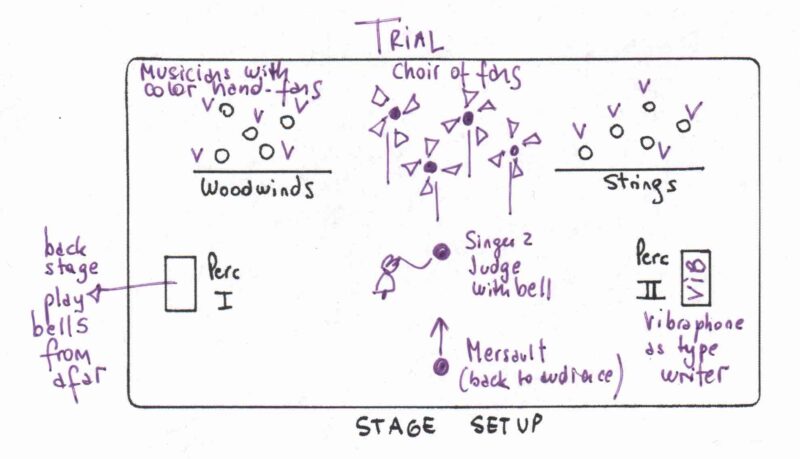
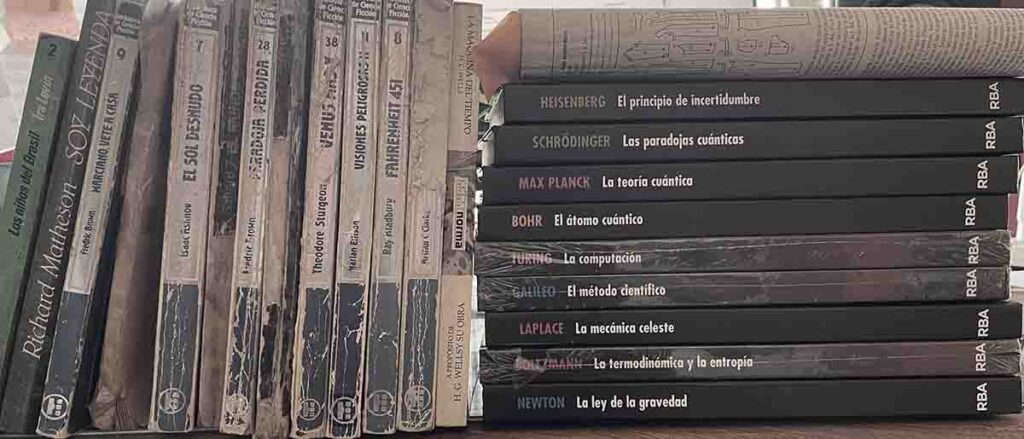

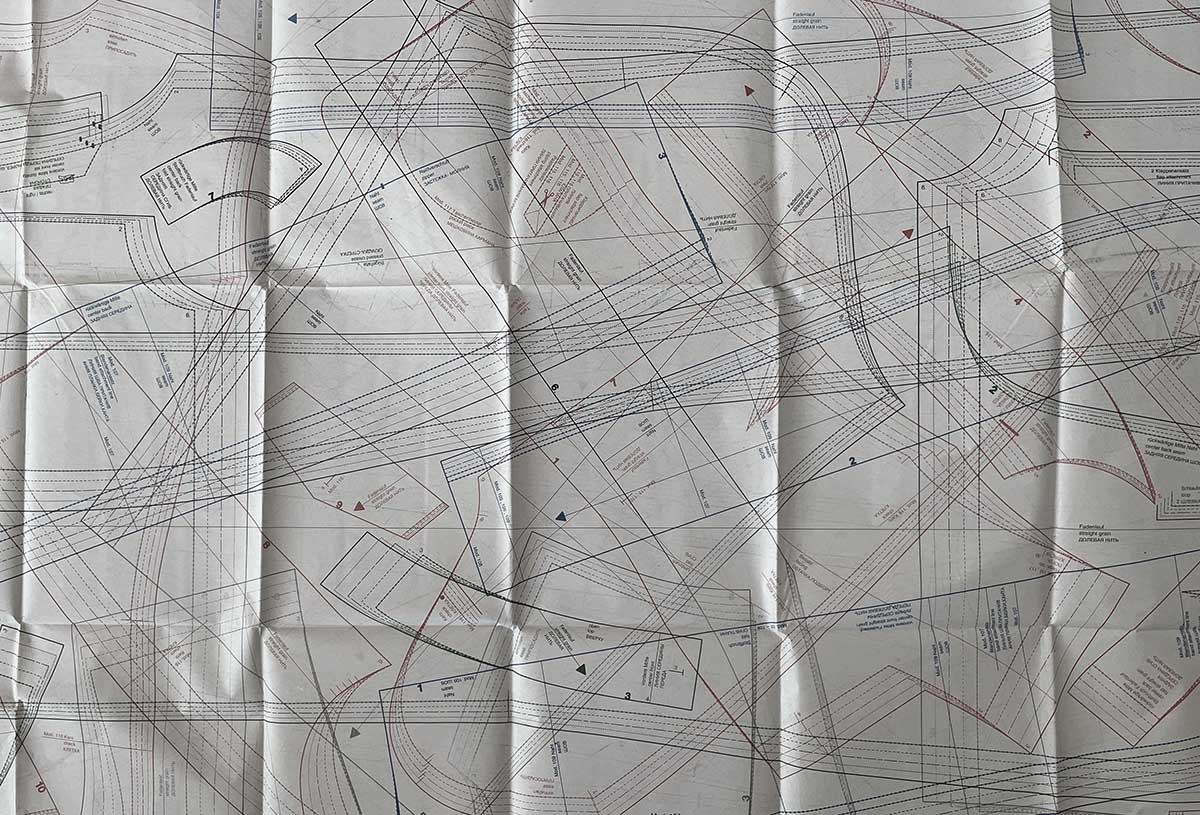

 1. Composing different spaces within the piece by grouping instruments by color and/or behavior (orchestration).
1. Composing different spaces within the piece by grouping instruments by color and/or behavior (orchestration).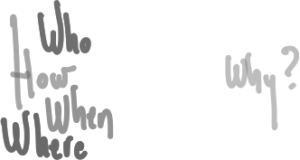 5. Choosing the musical materials both in terms of time and space: repeated notes freeze the time, while ever looping scales move the time in circles; repeated notes made by one instrument “freeze the space” while the hoquetus form opens it.
5. Choosing the musical materials both in terms of time and space: repeated notes freeze the time, while ever looping scales move the time in circles; repeated notes made by one instrument “freeze the space” while the hoquetus form opens it.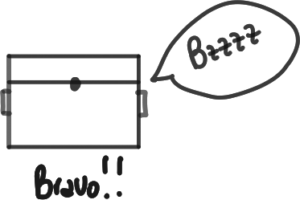
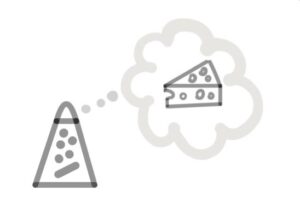 I
I 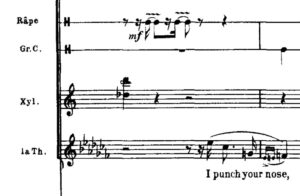 La râpe à fromage doit être frottée avec un baguette de Triangle/
La râpe à fromage doit être frottée avec un baguette de Triangle/